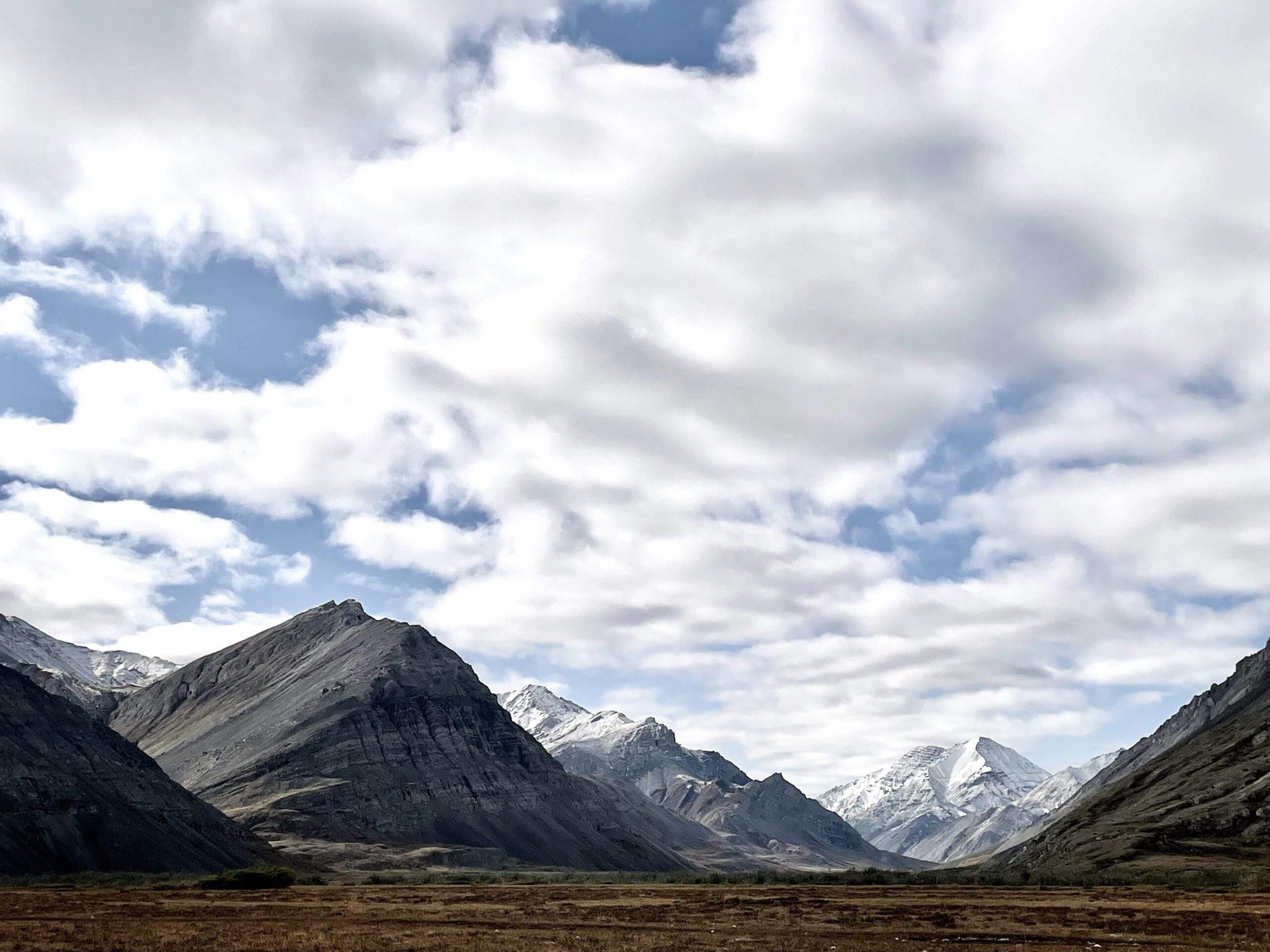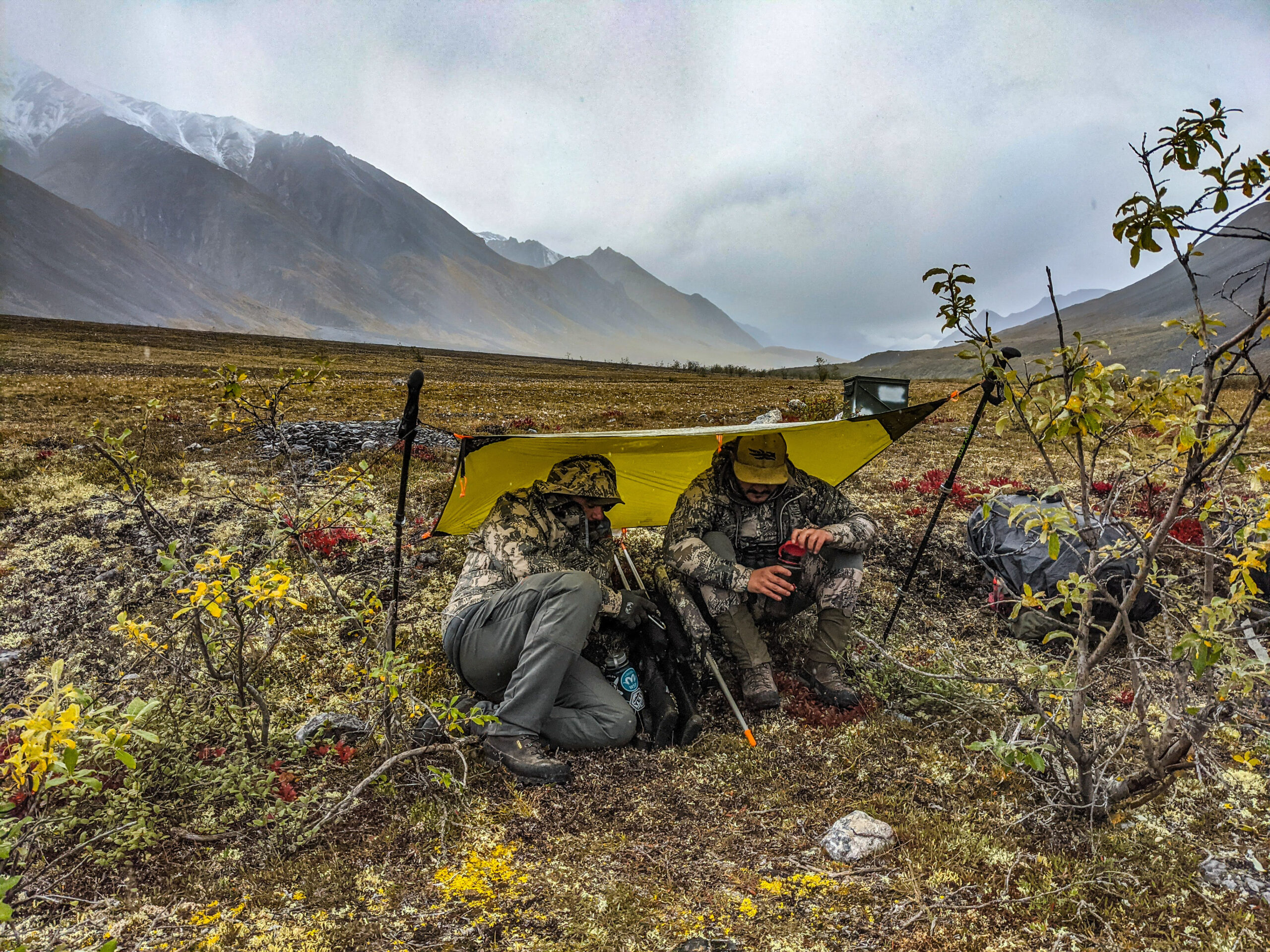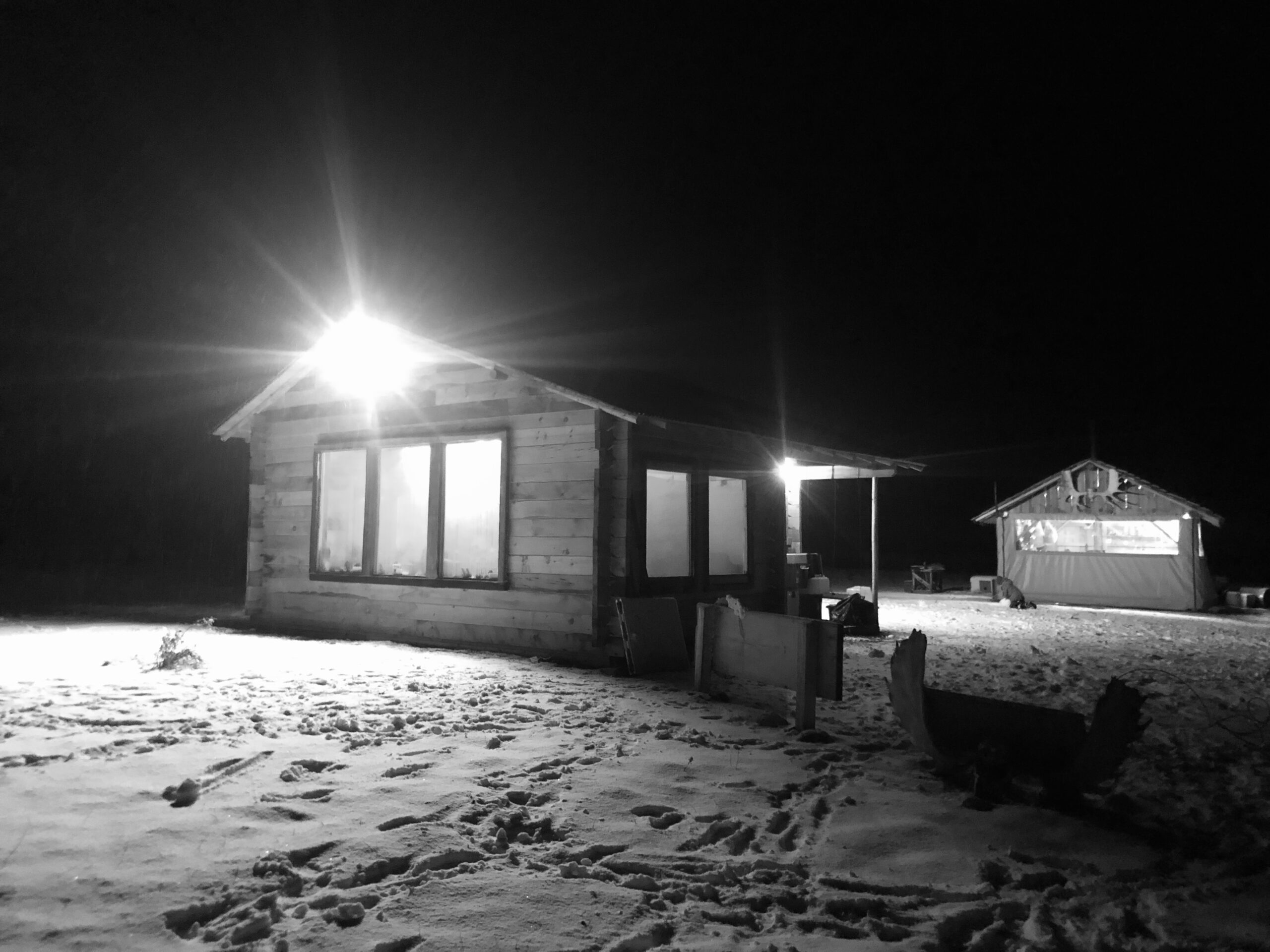Visit NOAA’s National Weather Service for information about current weather in the Brooks Range, AK.
Arctic Village, Alaska
https://forecast.weather.gov
Galbraith Lake, Alaska
https://forecast.weather.gov
Deadhorse, Alaska
https://forecast.weather.gov
The climate on the north slope of the Brooks Range is best described as the Arctic. The temperatures will vary from 60 below to 75 above between summer and winter. There is permafrost a few feet down in August. It can snow any time of year. The north side of the Brooks is considered a desert and generally does not get much rain compared to other parts of Alaska. Rain levels are relatively low but the ground stays saturated from poor drainage due to the permafrost. The ice pack off of the coast has a big influence on temperatures and fog. Fog will be common along the foothills to the coastline. An onshore breeze will blow the fog upslope against the range. Often one side of the range or the other is influenced by a low front resulting in poor weather. Strong high pressure will build over the region and result in periods of beautiful weather. But like any mountain environment, the weather is always changing and is hard to predict. Temperatures in August will range from a light frost to 75 degrees and vary with sun, rain, and snow in the same day. Commonly there are squall lines that continually come across the range.
Be mentally prepared for non-hunt days and non-fly days due to poor weather. This is just part of hunting in remote Alaska. The weather is unpredictable and there are no accurate weather forecasts. Weather is most reliable as a visual assessment called in by you and the guide in the field.
Stats
- Average Summer Temperature (July)
41 degrees F (5º C) - Maximum Summer Temperature
86 degrees F (30º C) - Average Winter Temperature (Feb.)
-4 degrees F (-20º C) - Total Cloud Cover – 54% of year
- Expected Days of Fog – 115 days
- Average Annual Rainfall – 10 in. (25 cm)
- Prevailing Winds at Barter Island – 13 knots easterly
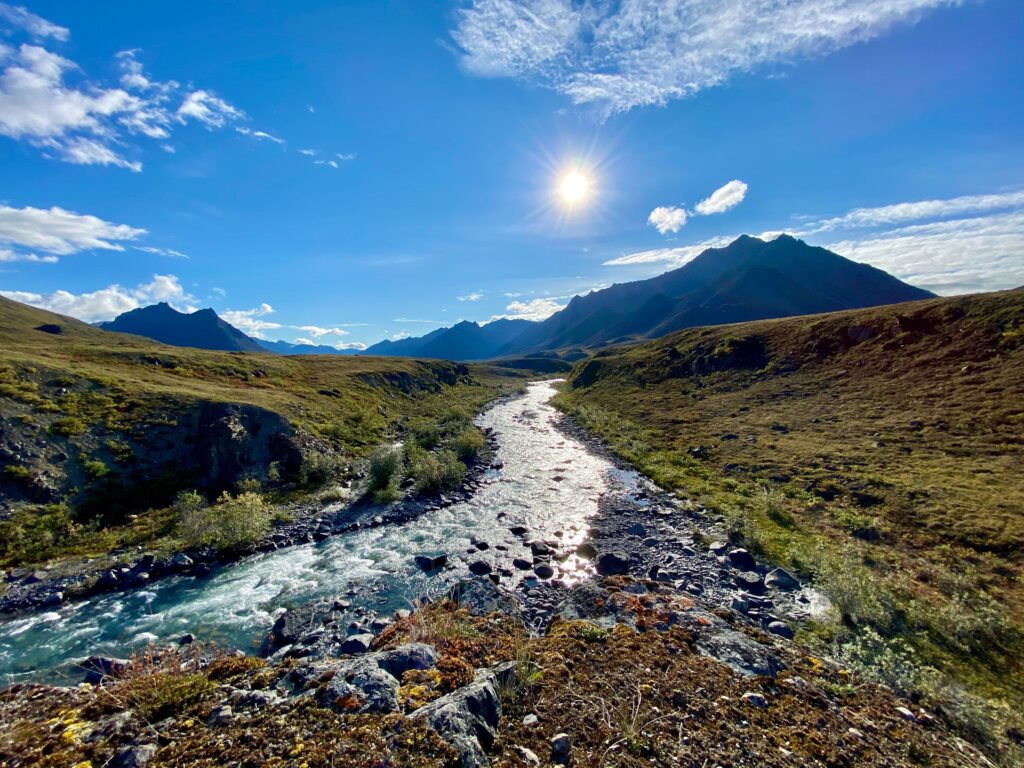
The difference in weather between hunt dates
August – Session 1
Early August is usually nice with temperatures ranging between light frost at night and 60 degrees Fahrenheit during the day. There are generally squalls that produce rain, but may be ice and snow. We have experienced 6”-12” of snow before the season and two feet of snow the second week of August at the higher elevations threatening any travel through the mountains but this is not the norm. Usually, if it snows it will melt quickly on the south-facing slopes.
August – Session 2
August 20-31, temperatures are generally 25 to 50 degrees Fahrenheit range. Low pressures are more frequent and will result in high elevation snows that may not melt. Along with these storms comes poor visibility, high river crossings, and delayed travel. These times are mentally challenging for most hunters. In the second session of hunts we will plan on being in areas of less exposure to weather with options for extraction in case of snow.
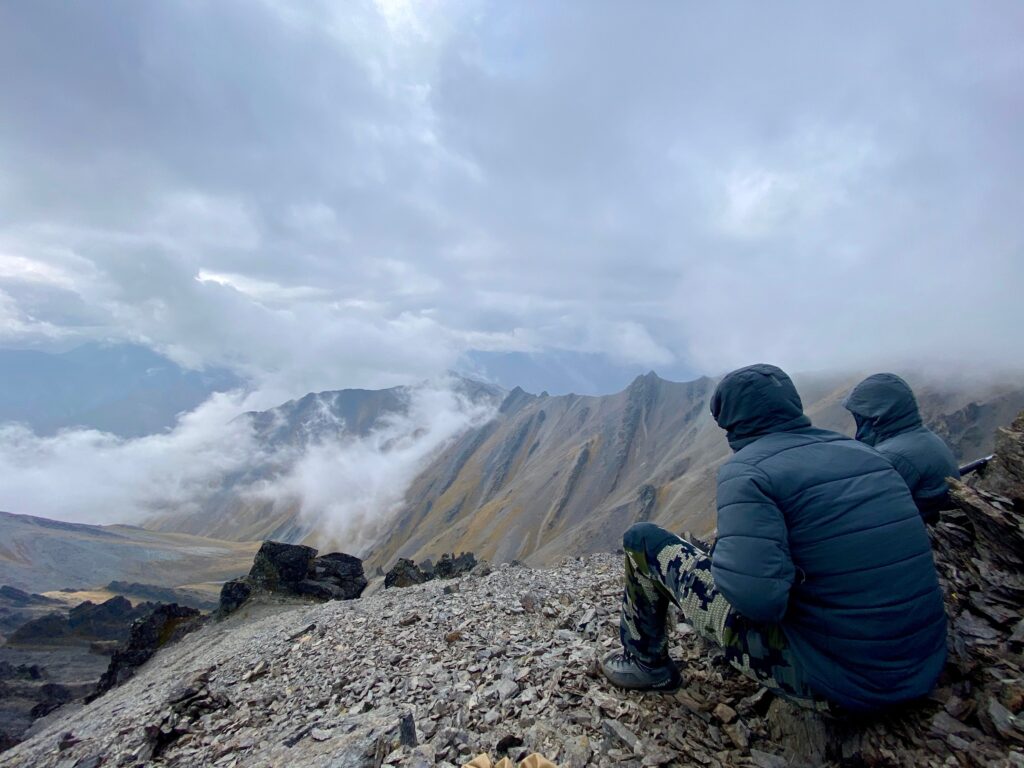
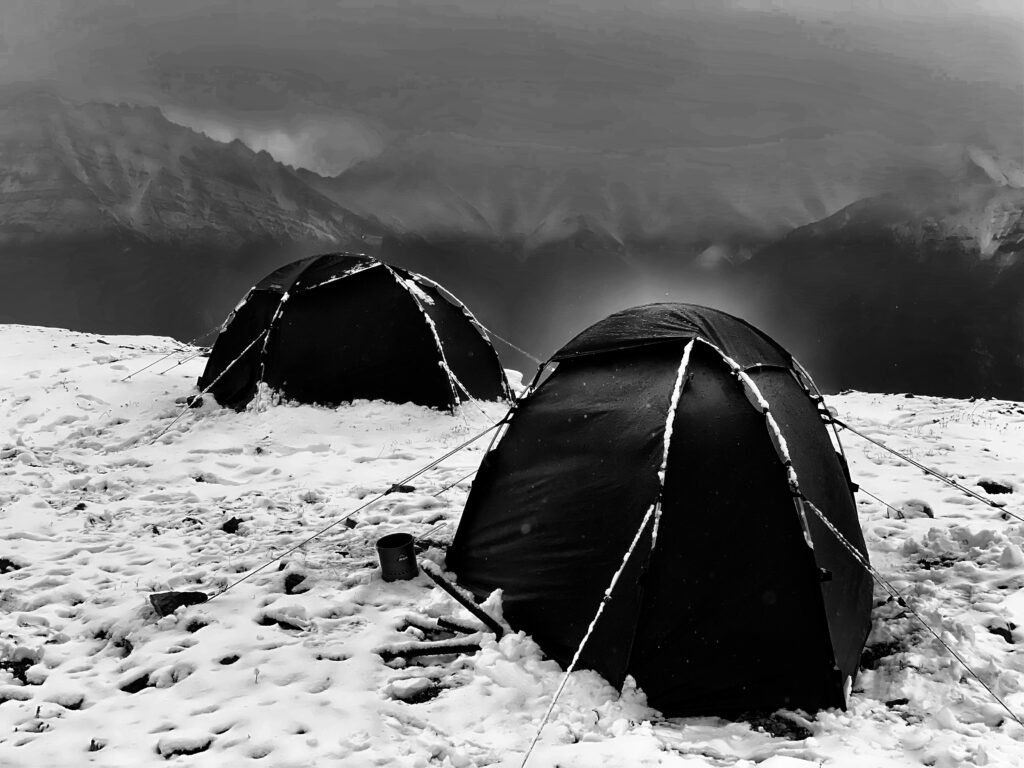
September – Session 3
September hunts in the Arctic are a game of patience! One guarantee is by mid-September the mountain creeks have begun to freeze (if not already)! Storms will become more violent and higher elevation airstrips are threatened by snow. Availability of communications and high-quality gear while in Spike Camp allows us to be patient and comfortable while waiting for better weather to make a move. Animals start moving out of high elevation areas that they have been in most of the summer and travel into transition areas lower down in elevation, looking for feed. In this part of the Brook Range rams will travel a long way from summer feed to winter feed. They will look for areas with good unfrozen grass and dwarf willow.
Rams are generally harvested between 4,000’ and 6,000’ with the bottom elevations of the mountains at 3,000’- 4,000’.

